Systems Thinking : unlocking the myth of Tree of Life. Attempts in co-relating the theory of Tree of Life, Taichi Yin-Yang Five Elements Trinity i±1 System, Traditional Chinese Medicine Differential Diagnosis-Cure Process, Schemas Theory, Relational Science, DSRP Theory, Five Aggregates of Human Mind System by Buddha, and Cognitive Process of Consciousness
2018 May 13 0 By Tomas 黃炎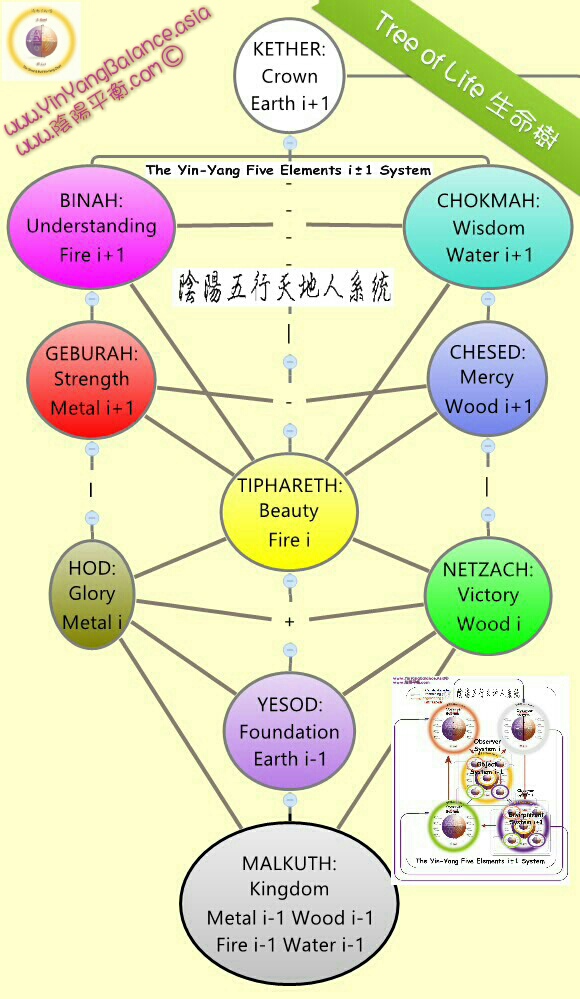
Abstract
“Tree of Life” is a term and concept that appeared in different ancient cultures. The one that is being investigated is the Hermetic version of Tree of Life, Qabalah, as illustrated by SpiritScienceCentral.com with 10 spheres or “planes” of creation which are individually called Sephira. General Systems Theories have progressively developed with the aim of understanding the general fundamental components and relationships of knowledge across different disciplines. All theories seem to attempt to lift the boundary of duality between the physical world with precise engineering, and the world of consciousness with fuzzy cognitive processes, and eventually develop different united non-dual systems thinking. The research in this paper has produced a possible set of co-relations among these different systems thinking, by analyzing in a systemic manner, the structure of the components and relationships, and their corresponding properties and transformations. It demonstrates that the study of Tree of Life could be incorporated under the umbrella of General Systems Theories.
Keywords
Confucianism, Buddhism, Taoism, and Traditional Chinese Medicine 儒釋道醫, Tree of Life 生命樹, Taichi Yin-Yang Five Elements Trinity i±1 System 太極陰陽五行天地人系統, Traditional Chinese Medicine Differential Diagnosis-Cure Process 中醫辨證論治, Schemas Theory 基模論, Relational Science, DSRP Theory, Five Aggregates of Human Mind System by Buddha 佛陀五蘊系統, Yogacara school of Mahayana Buddhism 唯識宗, Cognitive Process 認知過程, Consciousness 意識, Fuzziness vs Precision 精密與模糊, Five Virtues by Confucianism 儒家五常, Health and system thinking Special Integration Groups SIG 健康與系統思維特別整合分組, organizational force組織力, entropy熵, second law of thermodynamics熱力學第二定律, Integral East-West Systems Thinking 融合東西方系統思維, Ancient-Modern East-West systems thinking 古今中西系統思維, Unification of Nature and Man 天人合一, TCM Systemic Healthcare Engineering 中醫系統養生工程學
References
WONG TSL, EC Tomas 黃炎. (2018). ATTEMPTS IN CO-RELATING THE THEORY OF TREE OF LIFE, TAICHI YIN-YANG FIVE ELEMENTS TRINITY I±1 SYSTEM, TRADITIONAL CHINESE MEDICINE DIFFERENTIAL DIAGNOSIS-CURE PROCESS, SCHEMAS THEORY, RELATIONAL SCIENCE, DSRP THEORY, FIVE AGGREGATES OF HUMAN MIND SYSTEM BY BUDDHA, AND COGNITIVE PROCESS OF CONSCIOUSNESS [Full Paper]. Proceedings of the 62th Annual Meeting of the International Society for the Systems Sciences (ISSS). Corvallis, USA
Full Paper:
INTRODUCTION
General systems theories have progressively developed with the aim of understanding the general fundamental components and relationships of knowledge across different disciplines. After 60 years of hard work and academic exchanges, many modern Western systems theories have developed with a variety of terminologies, illustrating the relationships between observers and decision makers, between systems and environment, and between the organizational forces of systems (decreases entropy with emerging effect) and the chaotic forces of the 2nd law of thermodynamics (increases entropy with de-emerging effect). In order to enrich and enlighten further development of the theories, ancient Eastern wisdoms from Confucianism, Buddhism, Taoism, and Traditional Chinese Medicine (儒釋道醫) have been analyzed with modern systems terminologies, for the “Integral East-West Systems Thinking” project, sponsored by the Ancient Balance Medicine Research Institute
“Tree of Life” is a term and concept that appeared in different ancient cultures. The one that is being investigated is the Hermetic version of Tree of Life, Qabalah, as illustrated by SpiritScienceCentral.com with 10 spheres or “planes” of creation which are individually called Sephira (David, 2017). There are other versions of this concept which have more relationships between the spheres, for example, the Jewish and the Christian versions. The challenge of the current research lies in how to correlate these 10 spheres with the numbers 2 in Ying-Yang by Taoism (Wong, 2007); 3 in Heaven-Earth-Human Trinity by Confucianism (Wong, 2016); 4 in Distictions-Systems-Relationships-Perspectives theory of analysis (Cabrera, 2016); 5 in Five Elements Differential Diagnosis-Cure Process by Traditional Chinese Medicine (Kaptchuk, 2000)(Wong, 2005)(Wong, 2007), Five Aggregates Human Mind Systems by Buddha (Wong, 2008), Five Virtues by Confucianism (Wong 2015), Five components in R-theory of Relational Sciences (Kineman, 2011) ; 13 in the 5+3+5 levels in Emergent Meta-system in Schemas Thoery (Palmer, 2004); and 15 in the 3×5 levels in the Taichi Yin-Yang Five Elements Trinity i±1 System by the Ancient Balance Medicine Research Institute (Wong 2016). All theories seem to attempt to lift the boundary of duality between the physical world with precise engineering and the world of consciousness with fuzzy cognitive processes, and eventually develop different united non-dual systems thinking. The research in this paper has produced a possible set of co-relations among these different systems thinking, by analyzing in a systemic manner, the structure of the components and relationships, and their corresponding properties and transformations.
SYSTEMS THINKING AND THE DUALITY OF MIND AND MATTER
Figure 1. The common structure and function of systems thinking
- The properties of the observer
Modern development of human history has biased towards the precision of engineering physical sciences that require repeatable proof and predictable results. The other side of the duality is the fuzzy consciousness of cognitive process which has been pushed into the field of philosophy and religion. The benefit of the precision of engineering is the invention of better physical protection from the extreme weather and other dangerous species in our environment, and provide us with all the convenient tools in our daily life. However we have become so attached to all the physical matters and ignored our consciousness, which is the other half of what we are.
The obstacle for accepting our consciousness is that it is not as repeatable and predictable as the precision engineering physical sciences. Hence we easily fall into the trap of thinking that our consciousness (e.g. cause of our actions, emotions, innovations, and spirituality) is borne out of randomness, chaos, unpredictability, and hence non-scientific. However modern sciences have found and understood causal factors contributing to human behaviour out of chaos and fuzziness (Wikipedia a,b). One of the research directions of General Systems Theory (GST) with basic structure as shown in Figure 1, is the attempt to discover the structure and relationships of our consciousness that can be described by modern terminologies in physical sciences of precise engineering. For example, Distictions-Systems-Relationships-Perspectives (DSRP) theory of analysis, Differential Diagnosis-Cure Process by Traditional Chinese Medicine, Five Aggregates Human Mind Systems by Buddha, Five Virtues by Confucianism, R-theory of Relational Sciences by John Kineman, Emergent Meta-system in Schemas Theory (Palmer, 2004), and Taichi Yin-Yang Five Elements Trinity i±1 System by Ancient Balance Medicine Research Institute. They do not only research the properties of the observers, but also the relationship between the fuzzy mind and the precise matter. However, there could exist a limitation of what we can understand, as pointed out in the mathematical book “What We Cannot Know” (Du Sautoy, 2016). The research on the theory of “Tree of Life” points to similar patterns in describing the mind and matter and their relationships.
Precision engineering of physical sciences are duplicable and predictable, and this may be due to the fact that we put enormous amount of energy and efforts to ensure that the tools or machines do exactly what we want. Likewise, in understanding ourselves, we repeatedly devote our energy into what we like and what we hate. It follows that we get to grips with our repeatable and predictable behaviour caused by greed and hatred, while treating other aspects of our behaviour as random and chaotic. The latter may be haphazard and unpredictable, and we name it ignorance or “whatever”. However we also fall into the trap of confusing the “whatever kind of ignorance” which occur randomly, with the giving of unconditional kind of love which may also happen randomly. There are therefore four kinds of mind set. We are familiar with greed and hatred, but we should not mix up Wisdom and Ignorance. (Wong 2009)
- Duality of Mind and Matter
We propose human senses as a common base for analysis of the properties of the observer. Human senses work by differentiation (distinction) (Wong 2008) (Klein & Wong 2012). All senses differentiate the object (signal) from the environment through the boundary. In engineering terms the ability of the sensor to detect depends on the signal to noise ratio (SNR) (Wikipedia c). An analogy is the basic axioms in set theory in Mathematics (Al Lehnen 2007). As a result, the differentiation process produces three components, namely A, not A and the boundary. It also produces two relationships namely union and interaction as shown in Figure 2.
Figure 2. The Simplest Axioms in Set Theory
Since the differentiation inherited in the six human senses, namely sight, hearing, touch, smell, taste and thought (Wong 2008), is universal to humans, it could be used as a common platform for communication. Precision engineering of physical sciences employ matter and machine as the common senses and platform for scientific communication. The result seems to be repeatable because we put so much energy into ensuring uniformity in the way the matter and machine react to what they sense. Even with artificial intelligence (AI) embedded in the machine, for example, machine learning with neural network, we still very much restrict the machine to learn or recognize exactly what we want it to do. This rigidity does not only restrict what the machine can do, but also restrict us from understanding what consciousness is. The good news however is that through the development of machine learning, we are getting very close to breaking the boundary of duality of mind and matter in order to understand the consciousness or the cognitive process.
The concept of duality of mind and matter advocates that mind and matter are made up of totally different elements and concepts, and the existence of cognitive process or consciousness is also questioned. However the properties of the observer may provide a direction for the unification of the duality. We will take an overview of each of these systems theory and examine if there exists a common perspective in dealing with the duality of mind and matter.
TRADITIONAL CHINESE MEDICINE DIFFERENTIAL DIAGNOSIS-CURE PROCESS
Traditional Chinese Medicine (TCM) employs different differential diagnosis-cure processes to determine the state of the human body and prescribe corresponding strategies for a cure (Kaptchuk 2000) (Wong 2010c). Research also shows that there exists a basic pattern (Wong 2007) (Wong 2010c) for all the different processes, namely superficial-internal spectrum, cold-hot spectrum, and deficient-excess spectrum, which are first mentioned in (HuangDi 206BC- 25AD) (Gou 1999). The static and dynamics of the spectrums are shown in Figure 3 and Figure 4 respectively.
Figure 3. The dynamic form of the 3 common spectrums for diagnosis of systems
TCM is the maintenance engineering rather than design engineering of the human body. Research shows that the body state of human body can be represented graphically as the Good n Evil Yin-Yang chart as in Figure X (Wong 2005a).
Our research has found that a 3D representation provides a more vivid understanding and could correlate with the representation of the dynamics in Cybernetics. However it should be noted that this 3D spectrum is not another representation of the 3D space. It is believed that future research would show that the spectrums could be used to represent the whole space-time.
Figure 4. The 3D geometric representation of the Good and Evil Yin-Yang Chart for diagnosis of systems
Note that the Taichi (boundary) Yin-Yang (not A and A) combo could be used to represent mathematical formulas, for representation of relationships and transformations. The most important formula in physics is,
E = mc2
Yang Taichi Yin
After re-arrangement, we have
E/c = mc
Yang compress Taichi Yin expand
which has division on the LHS and multiplication on the RHS. The division could be regarded as compression and the multiplication as expansion on the number spectrum (Sanderson 2015). This compression of energy into matter is found in CERN collider for making new matters, and the expansion of matter into energy is found in all nuclear plants. That is, the exchanges between Yin and Yang require two different processes. As a result, the static three elements in the Taichi Yin-Yang combo requires two more processes to become dynamic. Five elements exist in oriental systems thinking in TCM, Confucianism and Taoism (Wong 2008). Our research shows that the five element systems could be represented as in Figure 5 with the engendering (birth) cycle and the restraining (control) cycle (Wong 2005a).
Figure 5. The Five Elements System
Therefore, we start with the differentiation nature of human senses, which causes the three elements Taichi Yin-Yang combo, which then causes the five elements system. Within each of the five elements, a different Good and Evil Yin-Yang Chart would exist. That is, the system is nested, recursive, and have a fractal nature.
FIVE ELEMENTS HEALTHCARE SYSTEM
Extending from physical healthcare, other affecting factors may include our emotions, behaviour, mental, social, other systems and the environment. An attempt to connect these factors in a Five elements structure was made as shown in Figure 6. (Wong 2016) A more detailed illustration of each of the systems was performed during the workshop at Jockey Club Hong Kong as shown in Finger 7.
Figure 6. The Five Elements TCM Systemic Healthcare Engineering
Figure 7. TCM Systemic Healthcare Engineering Workshop
THE FIVE AGGREGATES HUMAN SYSTEM OF BUDDHA
The five aggregates human system was adopted by Buddha (Buddha 2500 BC) to represent the properties of human body and mind. The idea was explained in detail in Vipassana mental healthcare 10-day courses held all over the world (Goenka1987a). Research has revealed the possible relationship between the five aggregates and the fundamental systems theory (Wong 2008) as shown in Figure 8.
Figure 8. The Five Aggregates human system of Buddha
The fifth aggregate is the physical body which is composed of the four material elements of earth, water, fire and air (Goenka1987a). Together with the idea of emptiness mentioned in (Buddha 2500 BC), it is possible to match the five elements system in TCM, Confucianism and Taoism with the four material elements of Buddha. Further research will be undertaken to investigate if Figure 9 could be a possible practical match.
Figure 9. The Four Natures of Physical Matters of Buddha
THE UNIFICATION OF NATURE AND HUMAN IN CONFUCIANISM AND DAOISM
The idea of “unification of nature and human” was pointed out in Confucianism and Taoism, and was one of the most important concepts in TCM (Kaptchuk 2000, 天人合一). Confucianism pointed out that in I Ching Hexagram, the top two lines represent Heaven (天), middle two lines represent Human (人), and the bottom two lines represent Earth (地) as shown in Figure 10 (Confucius 479 BC, part II 兼三才而兩之).
___ ___
___ ___Heaven (天)
___ ___
______Human (人)
______
______Earth (地)
Figure 10. The Heaven Earth and Human System
Water is the most important element in the teaching of Taoism (Laozi 590 BC, Ch 8, 76, 78). Water has similar properties as Dao (Tao), except that water has form while Tao has none. Maybe the water system in the five elements system theory could be expanded into five elements as well.
FIVE VIRTUES BY CONFUCIANISM
The five Confucian virtues system theory of Humanity, Justice, Etiquette, Wisdom and Integrity(仁義禮智信)and the five elements system theory of Wood, Metal, Fire, Water and Earth (木金火水土) in Taoism, are employed to correlate with the modern four independent power systems of executive, legislative, judicial, and the media (執法,立法,司法,媒體)in the governance of modern societies, as shown in Figure 11. Any imbalance between the five Confucian virtues in modern societies would require corresponding regulations of some of the five sub-systems to regain the balance (Wong 2015c). Wood: 仁 Humanity, Legislative; Fire: 禮 Etiquette, Executive; Earth: 信 Trust, Integrity; Metal: 義 Justice, Judicial; Water: 智 Wisdom, Media
Figure 11. five Confucian virtues system theory of Humanity, Justice, Etiquette, Wisdom and Integrity(仁義禮智信)
SCHEMA THEORY
Schema theory is developed by Dr. Kent Palmer (Palmer 2004) for laying a foundation for systems engineering. Emergence effect was found to be the key to correlate the 13 levels of the Emergence meta systems in Schemas theory and the 15 levels of the three sets of five elements in the Taichi Yin-Yang Five Elements Trinity i±1 system, as shown in Figure 12. (Wong 2016)
Figure 12. The Basic 13 Levels in Schema Theory
DISTICTIONS-SYSTEMS-RELATIONSHIPS-PERSPECTIVES THEORY OF ANALYSIS
Distictions-Systems-Relationships-Perspectives theory of analysis was developed by Derek Cabrera (Cabrera 2018). “DSRP is an acronym that stands for the four simple rules that underpins all forms of systems thinking: making Distinctions and recognizing Systems, Relationships, and Perspectives. By mixing and matching these four simple rules, people can easily learn how to think in more accurate, creative, and systemic ways, thereby improving performance in every area of life.”
We reckon that the “mix and matching, learning, thinking, or creating” is the fifth rule of the DSRP systems, or as it is named by Derek, Metacondition-Analysis (Fire system the operates)
R-THEORY OF RELATIONAL SCIENCES
Five components in R-theory of Relational Sciences was developed by John Kineman (Kineman, 2011) from the work of Anticipatory Systems by Robert Rosen. When the material simple system and the contextual complex system are combined for analysis, five fundamental components emerge, namely
- Observe (object, result, condition)
- Act (action, practice, dynamics)
- Plan (intention,design, attractor)
- Reflect (meaning, goal, exemplar)
- Whole
COMPARISON OF ANCIENT-MODERN EAST-WEST SYSTEMS THINKINGS
A comparison of the different systems thinkings described in the previous sections are shown in Figure 13
Figure 13. comparison of different systems theories
TREE OF LIFE
“Tree of Life” is a term and concept that appeared in different ancient cultures. The one that is being investigated is the Hermetic version of Tree of Life, Qabalah, as illustrated by SpiritScienceCentral.com with 10 spheres or “planes” of creation which are individually called Sephira. Other versions have more relationships between the spheres, for example, the Jewish and the Christian version.
The properties of the 10 spheres as described in SpiritScienceCentral.com are shown in Figure 14 and Table 1
Figure 14. Hermetic version of Tree of Life (Qabalah) as illustrated by SpiritScienceCentral.com
Table 1. Properties of each of the Qabalah of the Tree of Life as described by SpiritScienceCentral.com
KETHER
Translation: Crown
Yetziratic Text: The First Path is called the Admirable or power of comprehension of the First Principle, which has no beginning. It is the Primal Glory, because no created being can attain to its essence.
Titles: Existence of Existences. Ancient of Ancients. Concealed of the Concealed. The Most High. The Primordial Point. The Point within the Circle. The Vast Countenance. Macroprosopos. Amen.
Spiritual Experience: Union with God
Virtues: Attainment; Completion of the Great Work.
Vices: None
Tarot Cards: The Four Aces (The Root of the Powers of Fire, Water, Air, and Earth)BINAH
Translation: Understanding
Yetziratic Text: The Third Intelligence is called the Wisdom; it is also called the Creator of Faith, and its roots are in Amen. It is the parent of faith, whence faith emanates.
Titles: Ama, the dark sterile Mother. Aima, the bright fertile Mother. Khorsia, the Throne. Marah, the Great Sea.
Spiritual Experience: Vision of Sorrow (the deep Melancholy of the cosmos)
Virtues: Silence
Vices: Avarice
Tarot Cards: The Four Threes (Purpose, Abundance, Sorrow, and Works), the Four QueensCHOKMAH
Translation: Wisdom
Yetziratic Text: The Second Path is called the illuminating intelligence. It is the Crown of Creation, the Splendour of Unity, equalling it. It is exalted above every head, and is named by Qabalists the Second Glory.
Titles: Power of Yetzirah. The Supernal Father. Tetragrammaton. Yod of Tetragrammaton.
Spiritual Experience: The Vision of God face to face.
Virtues: Devotion
Vices: None
Tarot Cards: The Four Two’s (Genesis, Love, Peace, and Change), the Four KingsGEBURAH
Translation: Severity, Strength
Yetziratic Text: The Fifth Path is called the Radical Intelligence because it resembles Unity, uniting itself to Binah, Understanding, which emanates from the Primordial depths of Chokmah, Wisdom.
Titles: Din (Justice), Pachad (Fear), Strength.
Spiritual Experience: Vision of Power.
Virtues: Energy, Courage, Discipline
Vices: Cruelty, Destruction
Tarot Cards: The Four Fives (Struggle, Disappointment, Conflict, and Worry)CHESED
Translation: Mercy, Majesty, or Loving-Kindness
Yetziratic Text: The Fourth Path is called the Cohesive or Receptive Intelligence because it contains all the Holy Powers, and from it emanate all the spiritual virtues with the most exalted essences. They emanate one from another by virtue of the Primordial Emanation, the Highest Crown, Kether.
Titles: Love. Majesty. Gedulah.
Spiritual Experience: Vision of Love
Virtues: Obedience
Vices: Bigotry, Gluttony. Tyranny.
Tarot Cards: The Four Fours (Completion, Reserve, Respite, and Stability)TIPHARETH
Translation: Beauty
Yetziratic Text: The Sixth Path is called the Mediating Intelligence, because in it are multiplied the influxes of the Emanations; for it causes that influence to flow into all the reservoirs of the blessings with which they themselves are united.
Titles: Zoar Anpin (the Lesser Countenance), Melekh, the King, Adam, the Son, the Man.
Spiritual Experience: Vision of the Harmony of things, Mysteries of the Crucifixion
Virtues: Devotion to the Great Work
Vices: Pride
Tarot Cards: The Four Sixes (Victory, Pleasure, Ascension, and Success), the Four PrincesHOD
Translation: Glory / Splendor
Yetziratic Text: The Eight Path is called the Absolute or Perfect Intelligence because it is the mean of the Primordial, which has no root by which it can cleave or rest, save in the hidden places of Chesed, from which emanates its proper essence.
Titles: Elohim Tzabaoth (The God of Hosts)
Spiritual Experience: Vision of Splendour
Virtues: Truthfulness
Vices: Falsehood. Dishonesty.
Tarot Cards: The Four Eights (Shift, Renounce, Confusion, and Prudence)NETZACH
Translation: Victory
Yetziratic Text: The Seventh Path is called the Occult Intelligence because it is the refulgent splendour of the intellectual virtues which are perceived by the eyes of the intellect and the contemplations of faith.
Titles: Jehovah Tzabaoth (The Lord of Hosts), Firmness
Spiritual Experience: Vision of beauty triumphant
Virtues: Unselfishness
Vices: Unchastity, Lust
Tarot Cards: The Four Sevens (Courage, Illusions, Futility, and Investment)YESOD
Translation: Foundation
Yetziratic Text: The Ninth Path is called the Pure Intelligence because it purifies the emanations. It proves and corrects the designing of their representations, and disposes the unity with which they are designed without diminution or division.
Titles: Shaddai el Chai (the Almighty Living God)
Spiritual Experience: Vision of the Machinery of the Universe
Virtues: Independence
Vices: Idleness
Tarot Cards: The Four Nines (Strength, Happiness, Torment, and Flourish)MALKUTH
Translation: Kingdom
Yetziratic Text: The Tenth Path is called the Resplendent Intelligence because it is exalted above every head and sits upon the Throne of Binah. It illuminates the splendors of all the Lights, and causes an influence to emanate from the Prince of Countenances, the Angel of Kether.
Titles: The Gate (The Gate of Death, Gate of Justice, Gate of the Daughter of the Mighty Ones, the Gate of the Garden of Eden), the Inferior Mother. Malkah, the Queen. Kallah, the Bride. The Virgin.
Spiritual Experience: Vision of the Holy Guardian Angel
Virtues: Discrimination (Identification of isolate things)
Vices: Avarice, Inertia
Tarot Cards: The Four Tens (Responsibility, Satiety, Ruin, Legacy), the Four Princesses
When the properties of the sphere are compared with those of the Taichi Yin-Yang Five Elements Trinity i±1 System, the following co-relations are found and shown in Figure 15.
Figure 15. Co-relating Tree of Life and Taichi Yin-Yang Five Elements Trinity i±1 System 太極陰陽五行天地人系統
Referring to the interpretion of the sphere by SpiritScience.com, each one of the sphere are co-related to the Taichi Yin-Yang Five Elements Trinity i±1 System as shown in Table 2.
Table 2. Comparison of the thirteen levels of systems in different East-West Ancient-Modern Systems Thinkings
| Tree of Life Qabalah 生命樹 | Taichi Yin-Yang Five Elements Trinity i±1 System 太極陰陽五行天地人系統 | Five Aggregates Human Mind Systems by Buddha, 五蘊,Yogacara school of Mahayana Buddhism 唯識宗 | Schemas Theory by Kent Palmer 基模論 | Traditional Chinese Medicine, Daoism (Taoism) 中醫學,道家 |
| CHOKMAH Wisdom Dualism | Water i+1 Storage in the Environment | 8th cognition 第八識 alaya-vijnana 阿賴耶識,種子識 storehouse, basis from which come all seeds of consciousness; encompassing foundation consciousness; Reflexive awareness | Multiverse 8D 9D 8th dimension to 9th dimension | Will power 志(Zhi) storage of intention 意之所存謂之志 , Wisdom 智(Zhi)(Zhi) 元精 |
| CHESED Mercy creation into being Expansion | Wood i+1 Information extracted from the environment | 1st ,2nd ,3rd ,4th ,5th cognition 眼耳鼻舌身識 five senses of seeing, hearing smelling, tasting, and touch caksur-vijnana srotra-vijnana ghrana-vijnana jihva-vijnana kaya-vijnana | Kosmo 7D 8D | Virtue 魂(Hun), benevolence, kindness, Three Hun: Main主, Observe覺, Life命(天地命)三魂,Located in upper, middle and lower DanTian上中下丹田,元性 |
| BINAH Understanding Equilibrium | Fire i+1 Information processed in the environment | 6th cognition 意識 mental sense; Ideation; intellect, apprehension cognition of all the laws, and cause and effect | World 6D 7D | 神(Shen). Thinking process 元神 |
| KETHER Crown Oneness | Earth i+1 Formation of the Information System | 9th cognition 無污垢乾淨認識 Pure Ability to Differentiate 如來? | Domain\ 5D 6D | Consciousness of possibility 意(Yi) 心有所憶謂之意,一念之生,心有所向而未定者, 元氣 |
| GEBURAH Strength Structure uphold the laws Karma | Metal i+1 Information harvesting | 7th cognition 第七識 mano-vijnana 末那識, 意根 discriminating and constructive sense; cognition of oneself and develop into ego, me and not me; Deluded awareness; Distrubing emotion or attitude | Scape (Meta-system) 4D 5D | Soul of animal desires causing actions七魄(Po)本能和動作. Seven Po may corresponding to the seven Charkas天沖、靈慧、氣、力、中樞、精、英七魄七輪. 元情 |
| Emergent Water I the storage of Energy-Information | Observation識 cognition | System Schematization | Spiritual Healthcare (Environment) 靈修 | |
| HOD Glory Thoughts, Mental formations, Concentrated mind forms, Philosophy, reasoning, science | Metal i Compress or harvest of Energy-Matter-Information | Strategy 行, Action-Reaction, Mental conditioning | Reflective Social Special System | Behavioural Healthcare 修行 |
| TIPHARETH Beauty Love | Fire i Processing the Energy-Information | Desires 受, Sensations | Autopoetic Symbotic Special System | Emotional Healthcare 修心 |
| NETZACH Victory Feelings, Intuition, All of the polarized created energy | Wood i Expansion of the Energy-Information stroed in Water i | Distinction 想, recognition | Dissipative Ordering Special System | Mental Healthcare Character養性 |
| Emergent Earth i Formation of Energy-Matter-Information | Physical 色, physical body, physical matter | Seed Formation | Physical Healthcare (body system) 修身 | |
| MALKUTH Kingdom Heh: Earth | Metal i-1 compress or hold other matters together | Ground 地, solidity | System 3D 4D | Lung System肺臟:Lung, Large Intestine, nose, skin |
| YESOD Foundations Physical reality | Earth i-1 Space where interactions occours | Emptiness 空?, space? | Form 2D 3D | Spleen System脾臟: Spleen, Stomach, mouth, lips, muscle, Pancreas, Duodenum |
| MALKUTH Kingdom Yod: Fire | Fire i-1 Operates the system | Fire 火, | Pattern 1D 2D | Heart System心臟: Heart, Small Intestine, tongue, blood vessels |
| MALKUTH Kingdom Vau: Air | Wood i-1 expand other matters into the system | Wind 風, | Monad 0D 1D | Liver System肝臟: Liver, Gall Bladder, tendons, nails |
| MALKUTH Kingdom Heh: Water | Water i-1 provide the pool of storage for other matters | Water 水, cohesion | Facet -1D 0D | Kidney Syste腎臟: Kidney, Urinary Bladder, ear, bones |
COMMON STURCTURE OF A GENERAL SYSTEMS THEORY GST
General systems theories have been developing with the aim of understanding the general fundamental components and relationships of knowledge across different disciplines. After 60 years of hard work and academic exchanges, many modern Western systems theories have developed with a variety of terminologies, illustrating the relationships between observers and decision makers, between systems and environment, and between the organizational forces of systems (decreases entropy with emerging effect), and the chaotic forces of the 2nd law of thermodynamics (increases entropy with de-emerging effect).
All theories seem to attempt to lift the boundary of duality between the physical world with precise engineering and the world of consciousness with fuzzy cognitive processes, and eventually develop different united non-dual systems thinkings.
It seems that there are three components connecting the consciousness system and the physical system, providing interaction between them. These include expanding Energy-Matter-Information into the other for innovation, and compressing Energy-Matter-Information into the other for storage. Although the consciousness system and the physical system seem to complement each other with opposite properties when analyzed in an emergent manner, both of them appear to have a similar set of components and relationships when analyzed in a de-emergent manner.
Some of the systems thinking model do not have the de-emergent components of water i into five components in level i+1. Further research may try to investigate the possible representation.
CONCLUSION
A common structure and relationships of different Ancient-Modern East-West (古今中西)systems thinking seem to exist. One of the representation is the Taichi Yin-Yang Five Elements Trinity i±1 System, which is composed of five elements in the environment on top and five elements in the system down under, with three elements in between connecting the environment and the system. When the five elements in the environment emerge and become one element, and the five elements in the system emerge and become one element, these two emerged elements will hence form the same five elements structure with the middle three elements. Hence the same structure of three (Taichi Yin-Yang) and five (Five elements) repeat itself recursively, and have the property of fractal geometry. It is believed that the bridging of these Ancient-Modern East-West systems thinkings would inspire more research and academic exchanges, leading to a more unified holistic worldview for understanding ourselves and the world around us.
REFERENCES
Al Lehnen. (2007) An Elementary Introduction to Logic and Set Theory. Accessed at http://faculty.matcmadison.edu/alehnen/weblogic/logset.htm#Unions on May 1, 2007.
Buddha (2500 BC). The Heart of the Perfection of Wisdom Sutra 《般若波羅蜜多心經》
. India (Heart Sutra / The Heart of Prajna Paramita Sutra)
Cabrera, Derek (2015). Systems thinking made simple: new hope for solving wicked problems. Ithaca, NY: Odyssean Press. ISBN 0996349308. OCLC 915799089. https://en.wikipedia.org/wiki/DSRP
Confucius (479 BC). Confusions Ten Wings shiyi 十翼. China《系辭上傳》曰:「一陰一陽謂之道」. Accessible at http://www.fushantang.com/4000/02/p2047.html, on May 1, 2007.
Dekkers Rob (2014). Applied Systems Theory. Springer. Available at https://books.google.com.hk/books?id=H-RhBAAAQBAJ&pg=PA56&lpg=PA56&dq=system+observer+environment+#v=onepage&q=system%20observer%20environment%20&f=false
Du Sautoy, Marcus (2016). What We Cannot Know: Explorations at the Edge of Knowledge. Fourth Estate, UK. ISBN 9780007576593
FuXi Shi 伏羲氏. (1122 BC). I Ching. China. Accessible at http://afpc.asso.fr/wengu/wg/wengu.php?l=Yijing&no=0, on May 1, 2007.
Goenka S. N 葛印卡老師, (1987a). THE DISCOURSE SUMMARIES Talks from a Ten-Day Course 開示集要in Vipassana Meditation. http://www.dhamma.org/ ,http://www.amazon.com/s/ref=nb_ss_b?url=search-alias%3Dstripbooks&field–keywords=discourse+on+vipassana+goenka
Gou, A. (1999). 黄帝內经素问校注语译 Huangdi Neijing Suwen Jiao Zhu Yu Yi (Yellow Emperor’s Inner Classic: Plain Questions ?Critically Compared, Annotated and Translated) ISBN 7-5308-2114-8.Tianjin Science and Technology Press, Tianjin, China.
HuangDi 黃帝 (206BC- 25AD). Huang Di Nei Jing (The Yellow Emperor’s Classic of Internal Medicine). China. Also available at http://www.amazon.co.uk/gp/reader/0520021584/ref=sib_rdr_fc?ie=UTF8&p=S001&j=0#reader-page on May 1, 2007.
Kaptchuk Ted. (2000) The web that has no weaver: Understanding Chinese Medicine. McGraw-Hill Professional, ISBN:0809228408
Kineman, John (2011). Relational Science: A Synthesis, AXIOMATHES DOI: 10.1007/s10516-011-9154-z, Springer. Also available at http://69.195.124.95/~nexialor/relational-science/wp-content/uploads/2011/06/R-theory-Synthesis.pdf
Klein, Louis; Wong, T S L; Huang, E C Yan (2012). The Yin and Yang of Changes: Systemic Efficacy in Change Management [Full Paper]. Leadership through the Classics: Learning Management and Leadership from Ancient East and West Philosophy, International Conference on Leadership and Management in a Changing World:Lessons from Ancient East and West Philosophy? www.leadershipclassics.org Athens, Greece, 12-14 June 2011, p475-486 Part VII Chapter 32. Also published in Leadership through the Classics: Learning Management and Leadership from Ancient East and West Philosophy, Edited by: Gregory Prastacos, Fuming Wang and Klas Eric Soderquist Published by Springer; ISBN: 978-3-642-32444-4 (Print), 978-3-642-32445-1 (Online) Springer-Verlag Berlin Heidelbery 2012
Laozi, (Lao Tse) 老子(590 BC). Dao De Jing (Tao Te Ching)《道德經》. China. Accessible at http://www.thetao.info/english/english.htm, http://afpc.asso.fr/wengu/wg/wengu.php?l=Daodejing&no=0on May 1, 2007.
Palmer Kent D. (2004). The Foundations of General Schemas Theory – As an Extension to Systems Theory to Form a Mathematical and Philosophical Basis for Systems Engineering, USA. Conference on System Engineering Research CSER 2004
Sanderson Grant (2015). How to Think About Exponentials. www.3blue1brown.com. also available in video https://www.youtube.com/watch?v=F_0yfvm0UoU
David, Jordan (2017). QABALAH 103: THE TEN SEPHIROTH, Spirit Science. Also available at https://spiritsciencecentral.com/qabalah-ten-sephiroth/
Wikipedia (a) Chaos Theory, available at https://en.wikipedia.org/wiki/Chaos_theory
Wikipedia (b) Fuzzy Control System, available at https://en.wikipedia.org/wiki/Fuzzy_control_system
Wikipedia (x) Signal to Noice Ratio, also available at https://en.wikipedia.org/wiki/Signal-to-noise_ratio#cite_note-1
Wong, T.S.L and others (2005). Traditional Chinese Medicine Diet – the food dictionary 中醫食療字典, ISBN 978-988-985-865-0, Copyright Ancient Balance Medicine Education Center Ltd., Hong Kong 版權所有 古中醫教育中心有限公司(香港).
Wong, T.S.L.and others. (2007). The modern logic of the TCM differential diagnostic process 辨證論治的現代邏輯 [Oral presentation]. 29th AACMA Australasian Acupuncture & Chinese Medicine Annual Conference. Brisbane, Australia 18 – 20 May 2007.
Wong, T S L; Huang Yan (2008) THE QUEST FOR A GENERAL SYSTEM THEORY FOR ANY PARTICULAR PERSPECTIVE – does it ever exist or has it been there all the time?[Full paper] Australia and New Zealand system Society’s ANZSYS conference 2008. Edith Cowan University (ECU), Perth, Western Australia, Australia, 1 -2 December 2008.Available at: http://www.yinyangbalance.asia/edu/anzsys_observer.htm
Wong, T S L; Huang Yan (2010c) The quest for a general information gathering process for diagnosis at the macroscopic level and the microscopic level – the Traditional Chinese Medicine eight principle differential diagnostic-cure process. [Abstract] 54th Annual Meeting of the International Society for the Systems Sciences – Governance for a Resilient Planet. Wilfrid Laurier University, Waterloo, Ontario, Canada 18–23 July 2010. Available at: http://www.yinyangbalance.asia/edu/ISSS2010_TCM_eight_principle.html
Wong, T S L; Huang, Yan 黃炎 (2015) Systemic resolutions for the reductionistic conflicts – a case study of the 2014 Hong Kong 928 protest, Harmony is of utmost importance [Abstract Presentation]. Proceedings of the 59th Annual Meeting of the ISSS – 2015 Berlin, Germany.
T S L Wong, E C Yan Huang, (2016a) , Synthesising Traditional Chinese Medicine and Engineering through Systems Engineering: Traditional Chinese Medicine Engineering [Full paper]. 以系統工程學綜合中醫藥與工程學 – 中醫藥工程學 Proceedings of the 60th Annual Meeting of the International Society for the Systems Sciences (ISSS), Vol 1, No 1 (2016), Boulder, US. ISSN: 1999-6918
T S L Wong, E C Yan Huang, (2016b) Five elements systemic healthcare program for physically strong emotionally happy mentally kind behaviorally charitable and spiritually enlightened – Reuniting Nature and Humanity 五行養生法之修身健康、修心受樂、慈悲養性、修行為善、正見靈修、以體現天人合一。[Abstract presentation] Proceedings of the 60th Annual Meeting of the International Society for the Systems Sciences (ISSS), (2016), Boulder, US.
International Society for the Systems Sciences 62nd annual conference ISSS2018
Health and Systems Thinking Special Integration Group presentation and Full paper
2018 July 22-27
Kelley Engineering Center Building
C2HM Hill Alumni Center
Oregon State University, USA
Abstract:
General systems theories have been developing with the aim of understanding the general fundamental components and relationships of knowledge across different disciplines. After 60 years of hard work and academic exchanges, many modern Western systems theories have developed with a variety of terminologies, illustrating the relationships between observers and decision makers, between systems and environment, and between the organizational forces of systems (decreases entropy with emerging effect) and the chaotic forces of the 2nd law of thermodynamics (increases entropy with de-emerging effect). In order to enrich and enlighten further development of the theories, ancient Eastern wisdoms from Confucianism, Buddhism, Taoism, and Traditional Chinese Medicine (儒釋道醫) have been analyzed with modern systems terminologies for the “Integral East-West Systems Thinking” project by the Ancient Balance Medicine Research Institute.
“Tree of Life” is a term and concept that appeared in different ancient cultures. The one that is being investigated is the Hermetic version of Tree of Life, Qabalah, as illustrated by SpiritScienceCentral.com with 10 spheres or “planes” of creation which are individually called Sephira. Other versions have more relationships between the spheres, for example, the Jewish and the Christian version. The research challenge lies in how to co-relate these 10 spheres with the numbers 2 in Ying-Yang by Taoism, 3 in Heaven-Earth-Human Trinity by Confucianism, 4 in Distictions-Systems-Relationships-Perspectives theory of analysis by Derek Cabrera, 5 in Five Elements Differential Diagnosis-Cure Process by Traditional Chinese Medicine, Five Aggregates Human Mind Systems by Buddha, Five Virtues by Confucianism, Five components in R-theory of Relational Sciences by John Kineman, 13 in the 5+3+5 levels in Emergent Meta-system in Schemas Thoery by Kent Palmer, and 15 in the 3×5 levels in the Taichi Yin-Yang Five Elements Trinity i±1 System by Ancient Balance Medicine Research Institute. All theories seem to attempt to release the boundary of duality between the physical world with precise engineering and the world of consciousness with fuzzy cognitive processes, and eventually develop different united non-dual systems thinkings. The research in this paper has found a possible set of co-relations among these different systems thinkings, by analyzing in a systemic manner, the structure of the components and relationships, and their corresponding properties and transformations.
It is believed that the bridging of these Ancient-Modern East-West (古今中西)systems thinkings would inspire more research and academic exchanges, leading to a more holistic worldview for understanding ourselves and the world around us.
About The Author
| Research Engineer, Health Educator. 研發工程師,養生教育工作者. | |-Bachelor of Medicine in Traditional Chinese Medicine – General Practice and TCM R&D |-Master of Engineering in Telecommunications – A Packet discarding strategy in Asynchronous transfer Mode ATM data network – Queuing theory |-Bachelor of engineering in Information Technology with First class honour - AI Machine Learning in electrical fault diagnostic networks |-Thesis Proposal for potential supervisor in Mathematics: Ethical AI Systems - Harmonizing Autonomy and Communal Responsibility | ===== Research Interest ===== | |Confucianism – Buddhism – Taoism – Traditional Chinese Medicine TCM 儒釋道醫 | Five Virtues of Confucius: Humanity-Justice-Etiquette-Wisdom-Trust 儒家五常:仁義禮智信 | Buddhism Five aggregates systems of human mind 釋j家五蘊系統 | Taoism Taichi Yin-Yang Five Elements Trinity i±1 System 道家陰陽五行天地人系統 | Traditional Chinese Medicine TCM differential diagnosis-cure process 中醫辨證論治系統, | Five Elements Systemic Healthcare Mental-Emotional-Physical-Behavoural-Spiritual 五行健康系統養生-養性-修心-修身-修行-靈修 | Integral East-West Systems Thinking 融合東西方系統思維 | Ethical AI Systems 倫理人工智能系統 | Five-elements Society System EMSCE 五行社會系統: Economics-Management-Social-Cultural-Environmental 經濟-管理-社會-文化-環境, | https://gravatar.com/edu1a1a10c906ec |


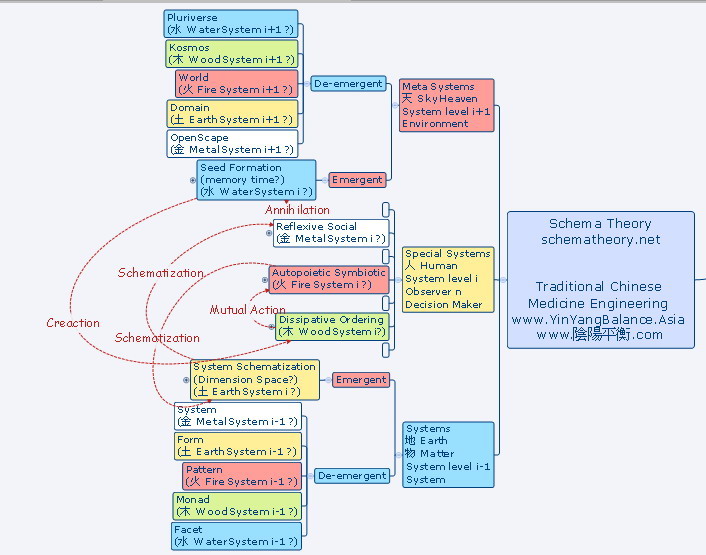
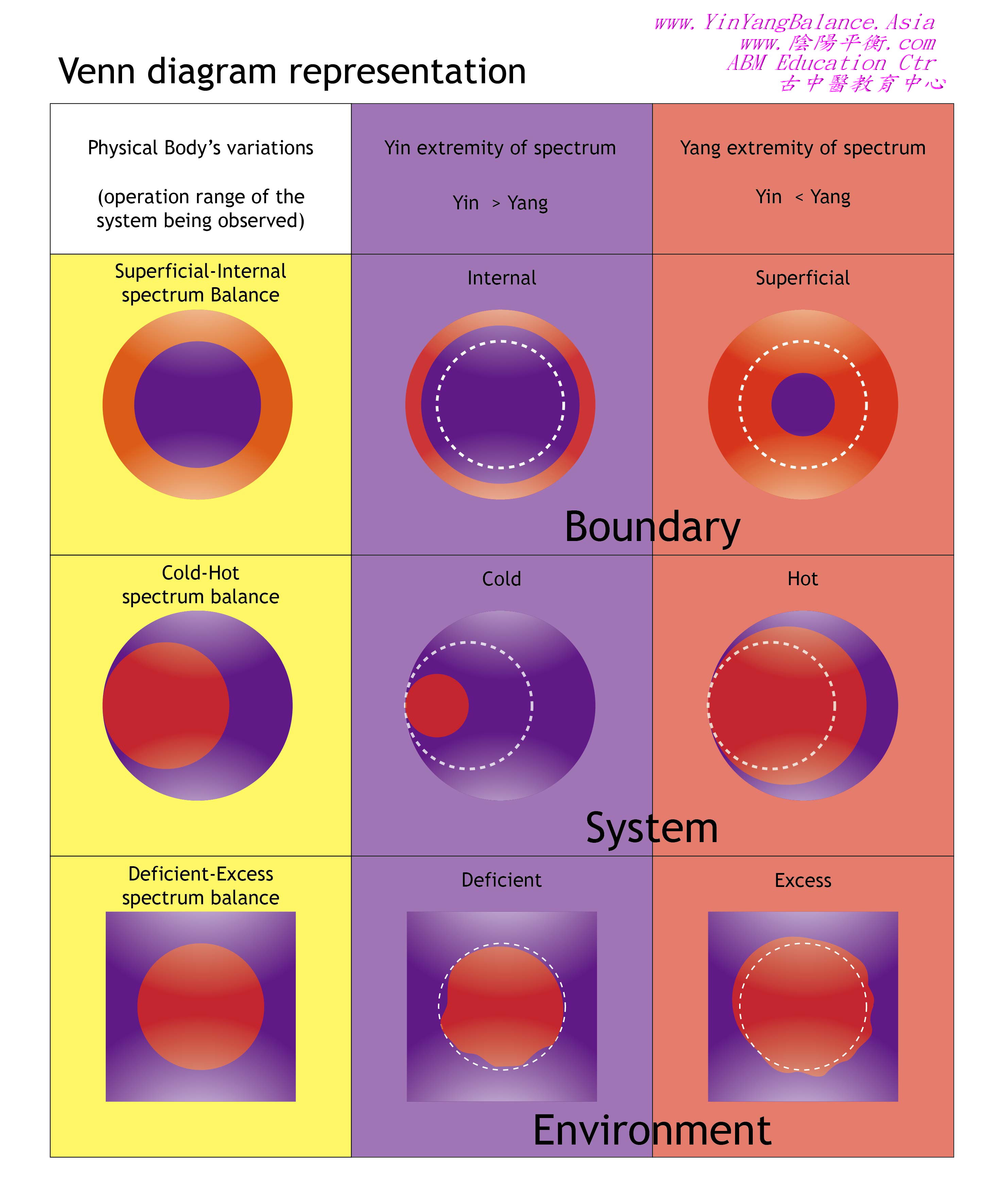
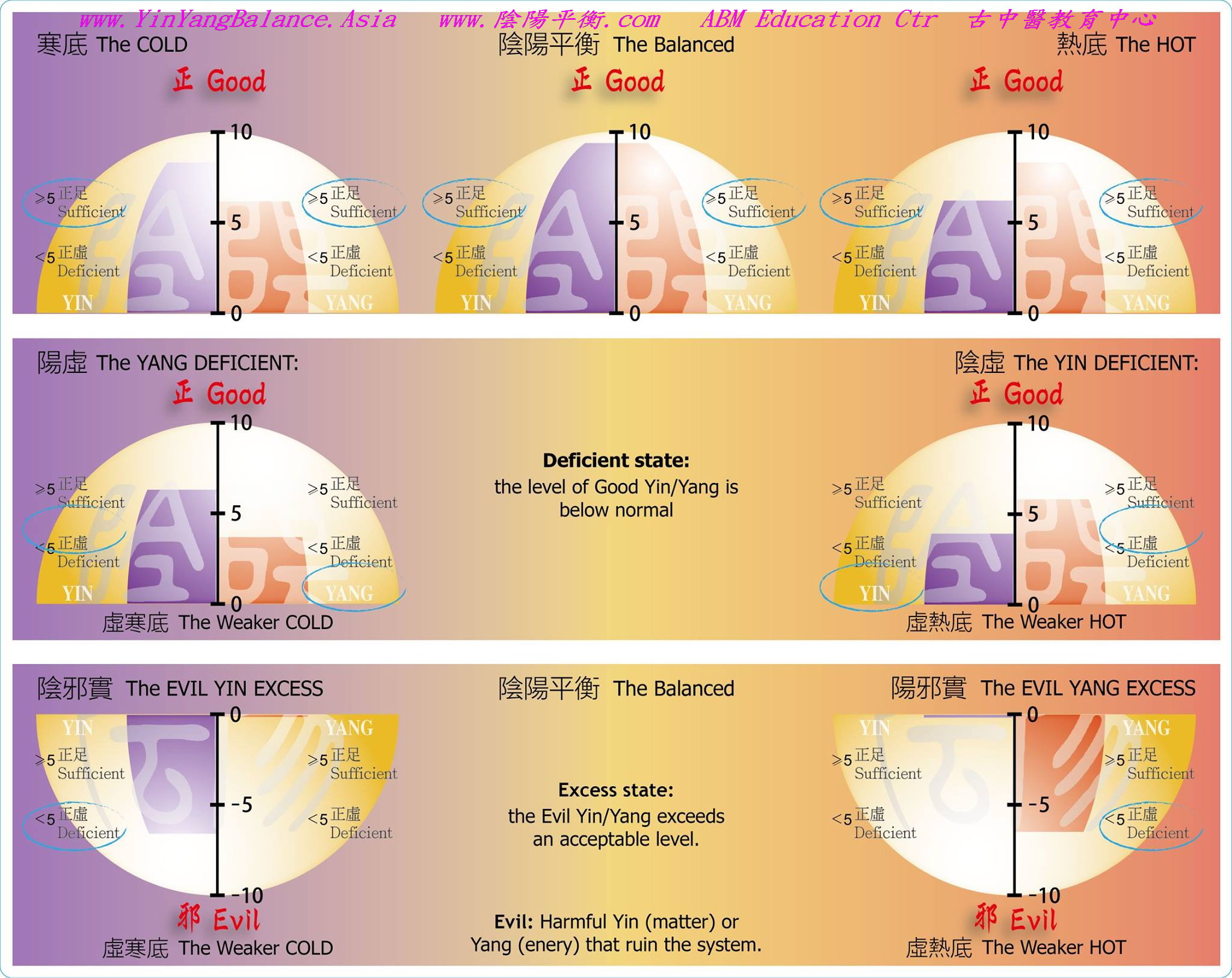

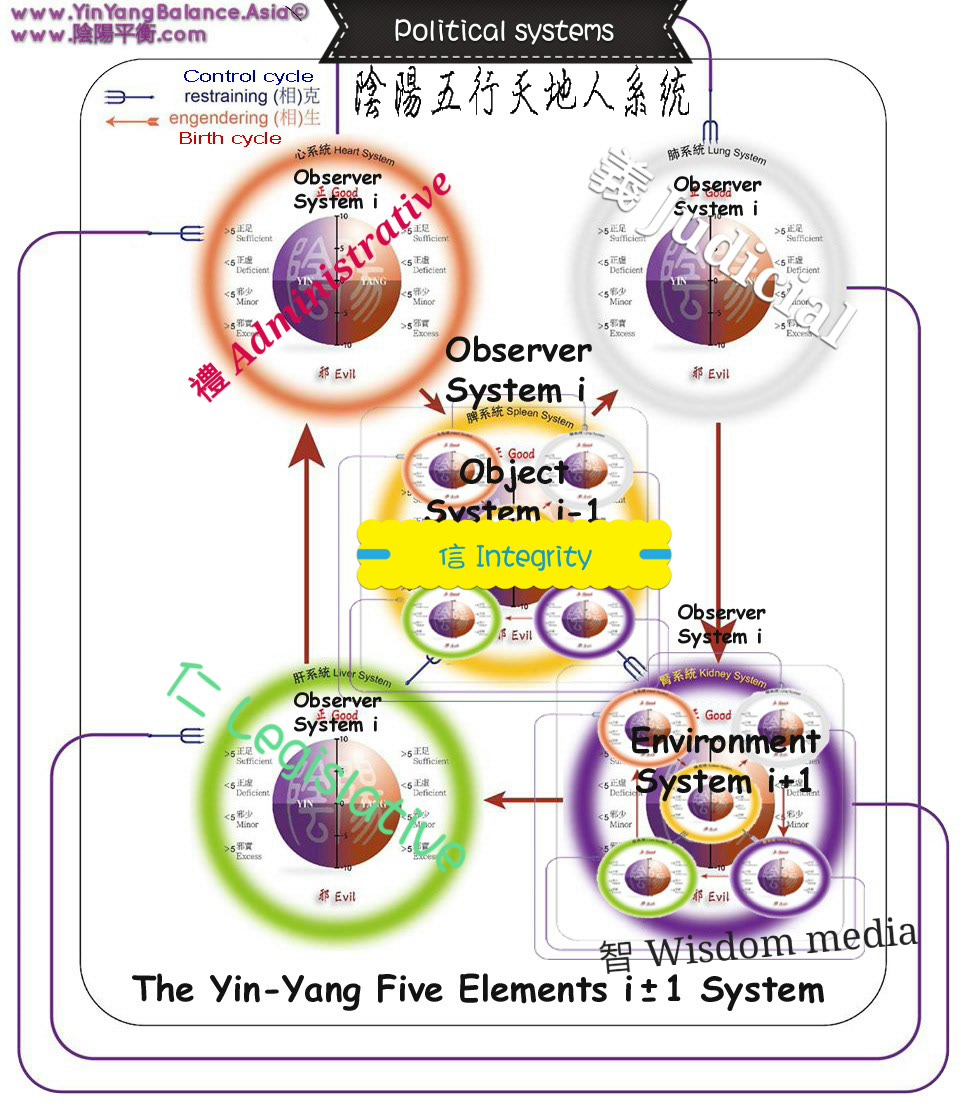
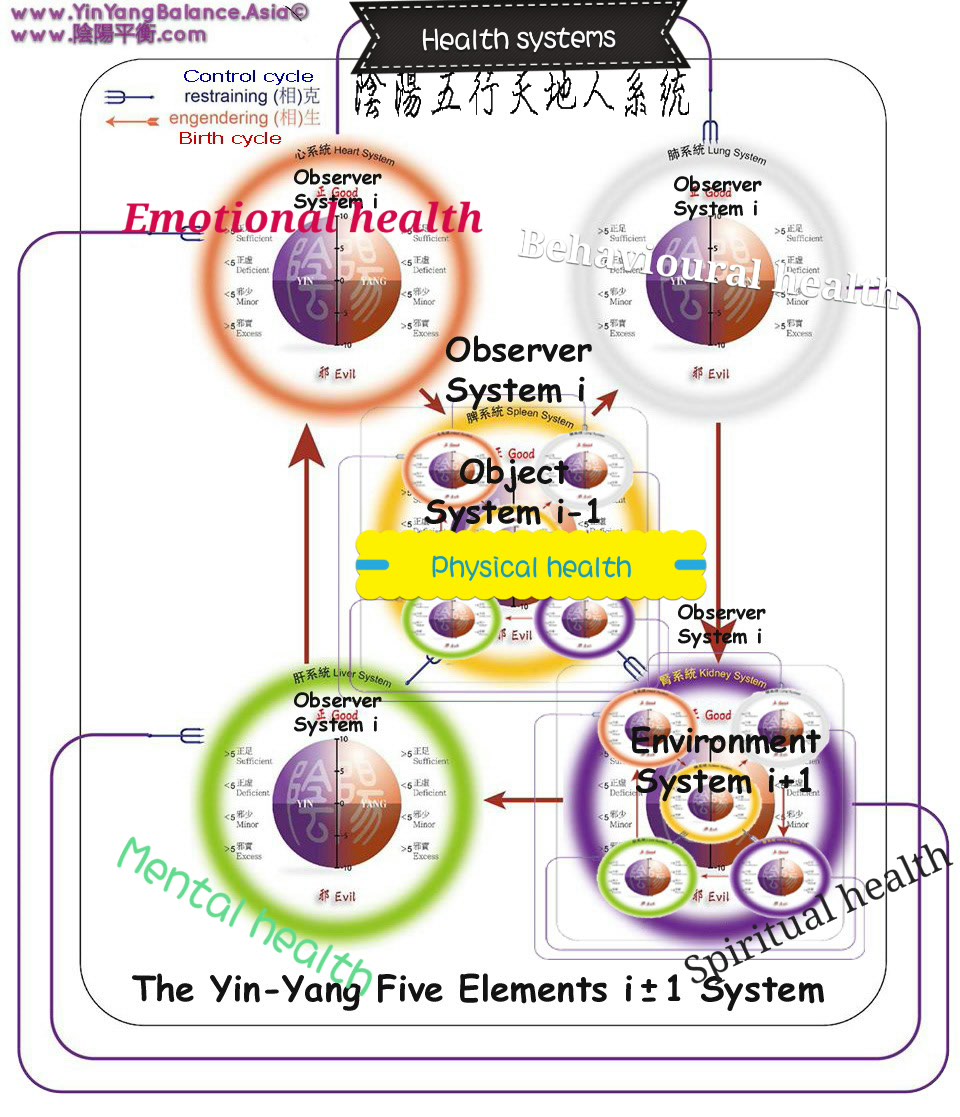
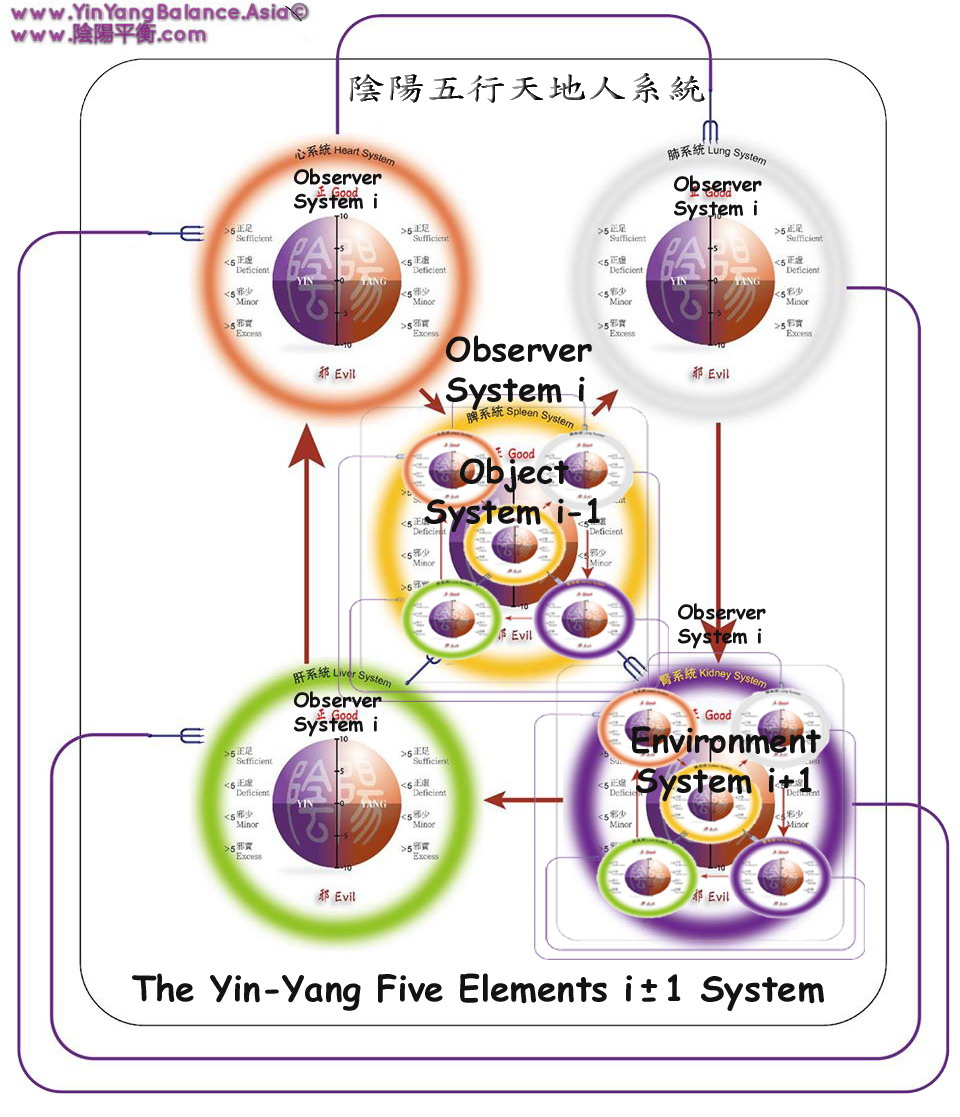
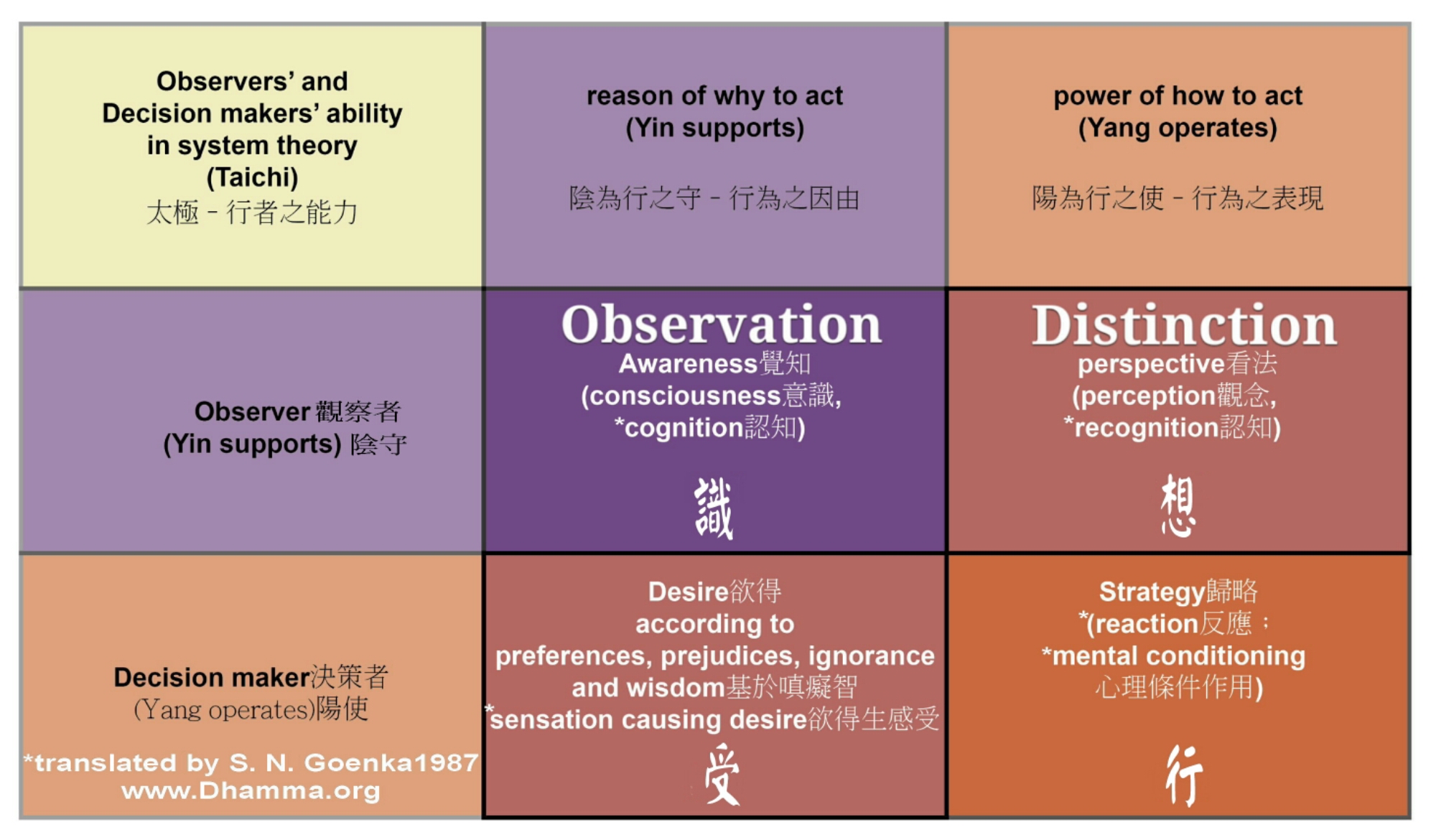
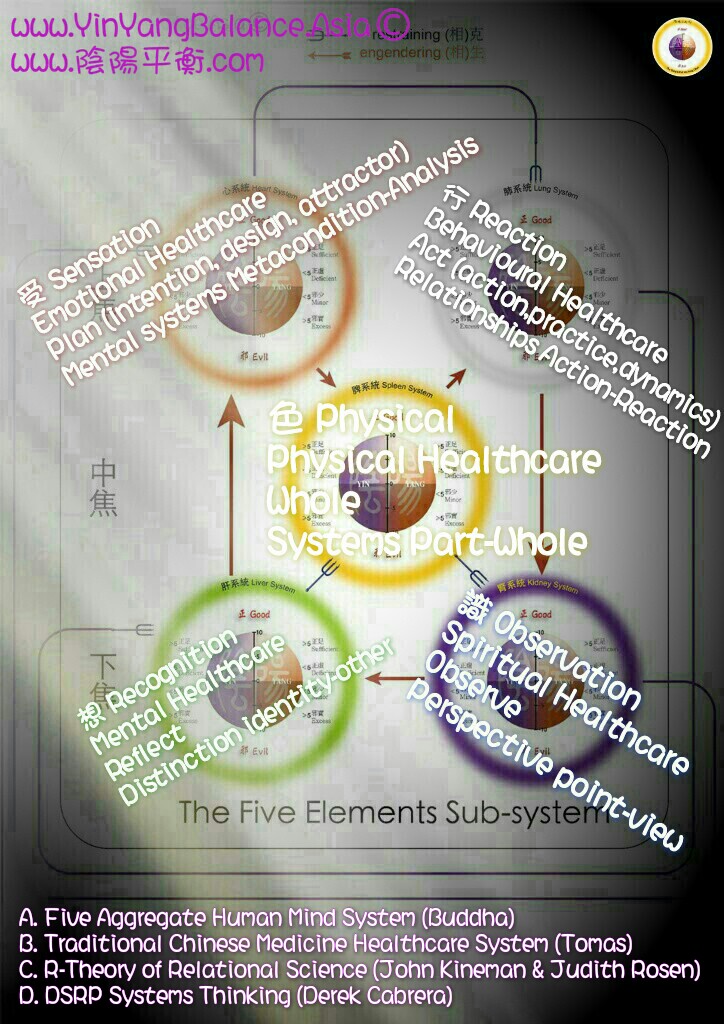
 古中醫學會心對心
古中醫學會心對心 微博 炎黃子孫共振中醫
微博 炎黃子孫共振中醫 古中醫教育中心面對面
古中醫教育中心面對面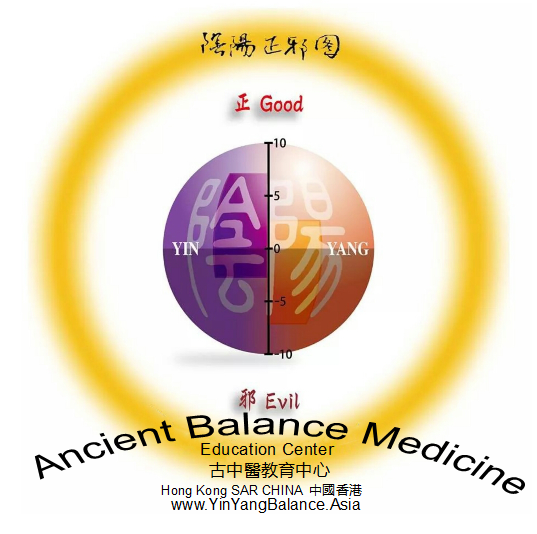 古中醫教育中心 Our Website
古中醫教育中心 Our Website